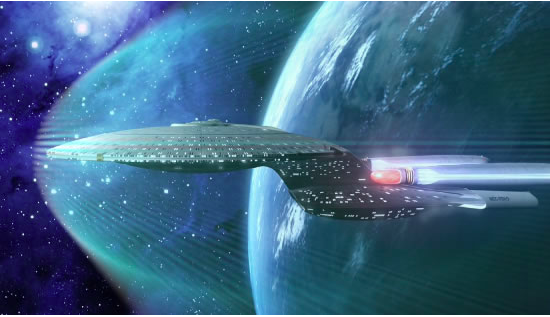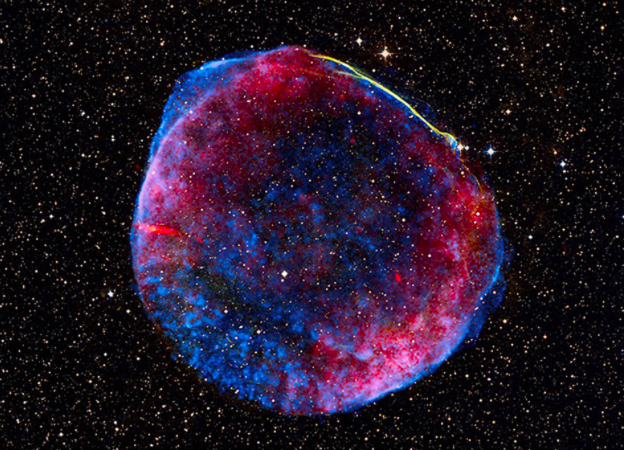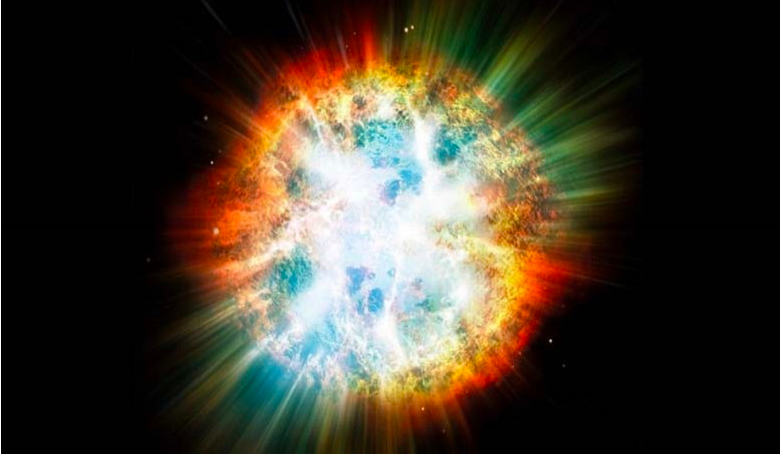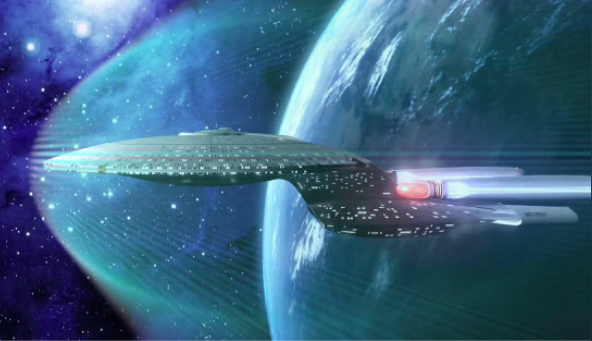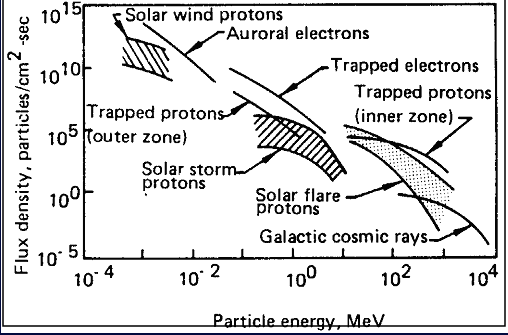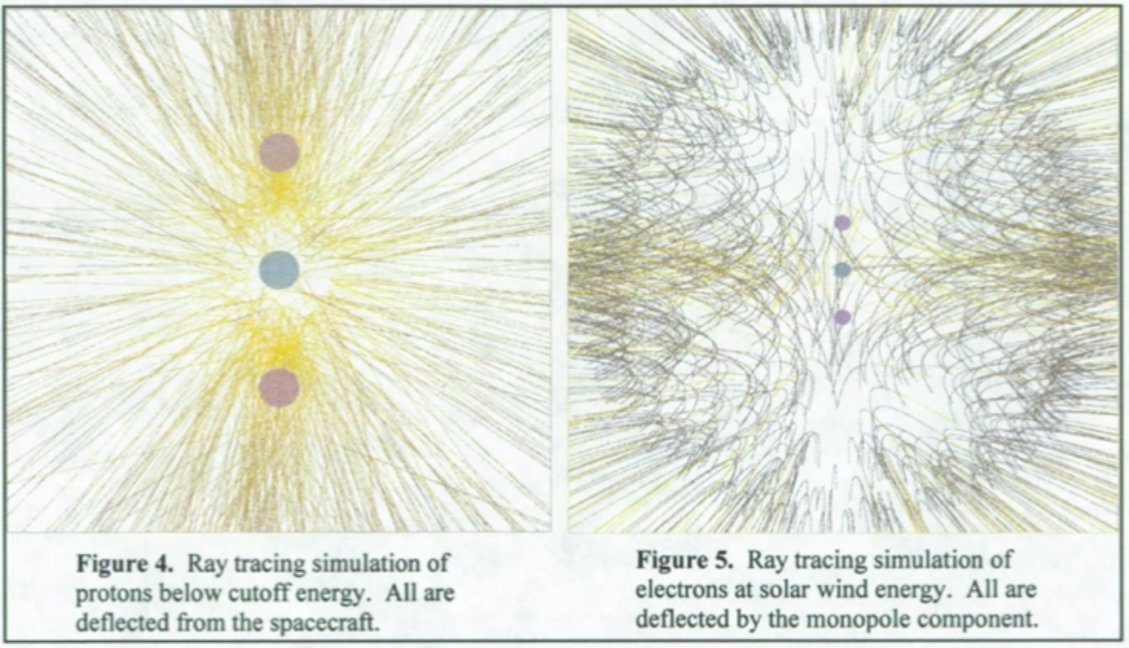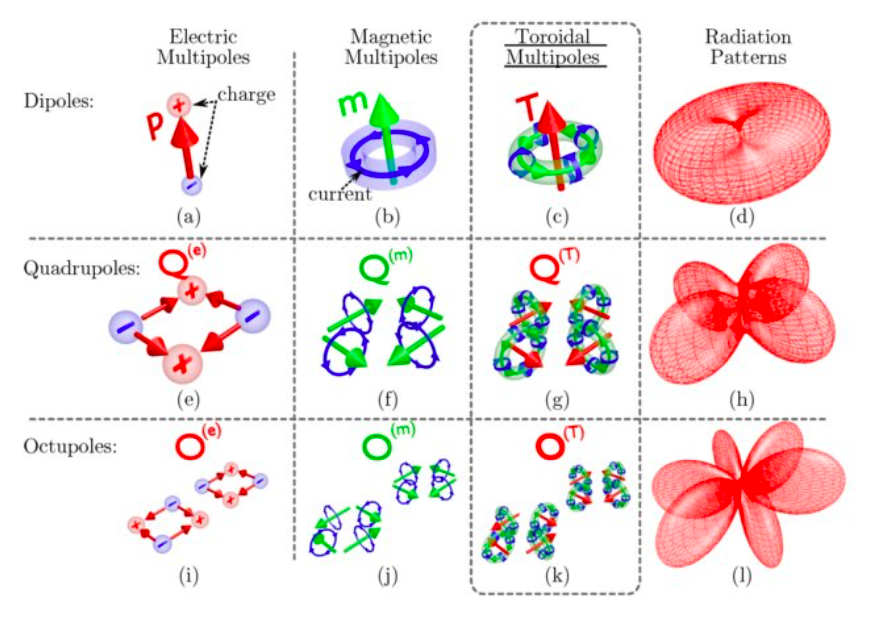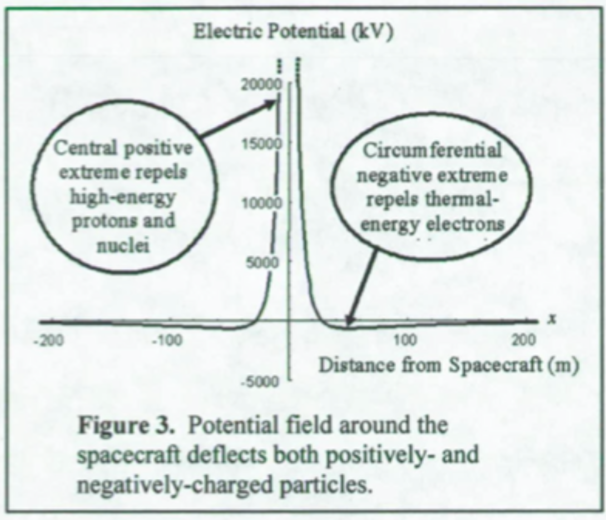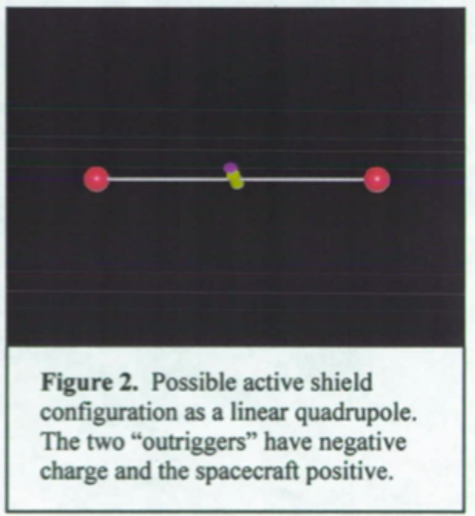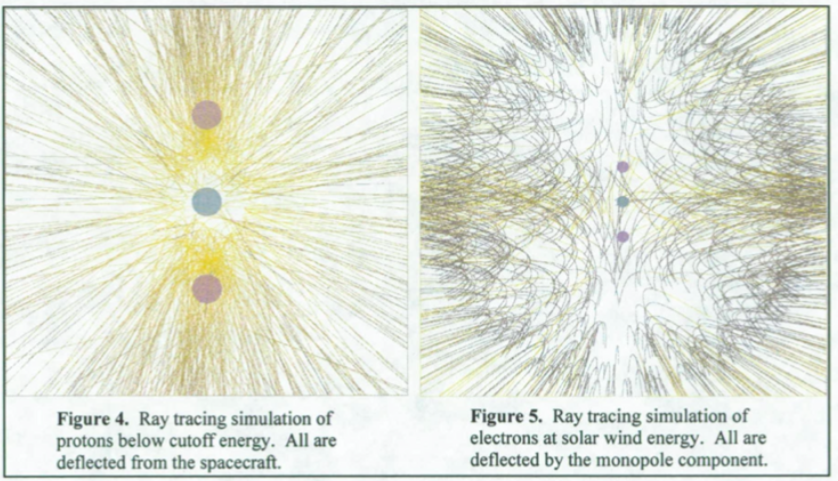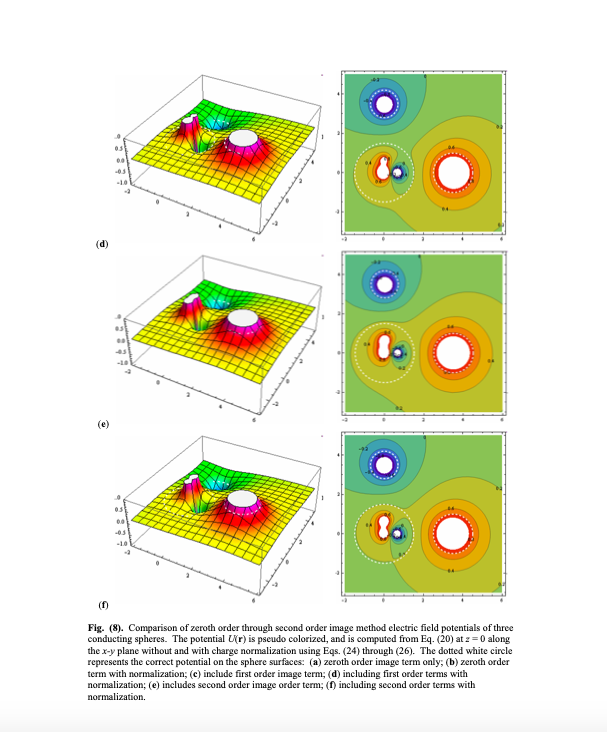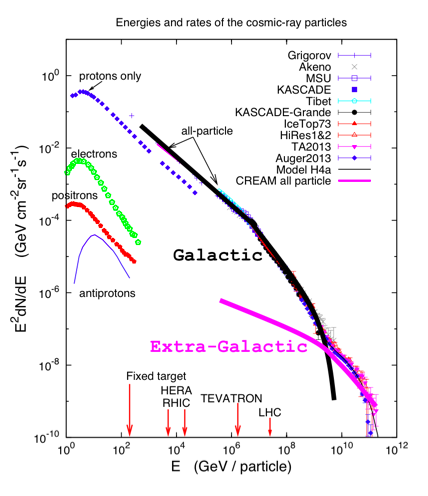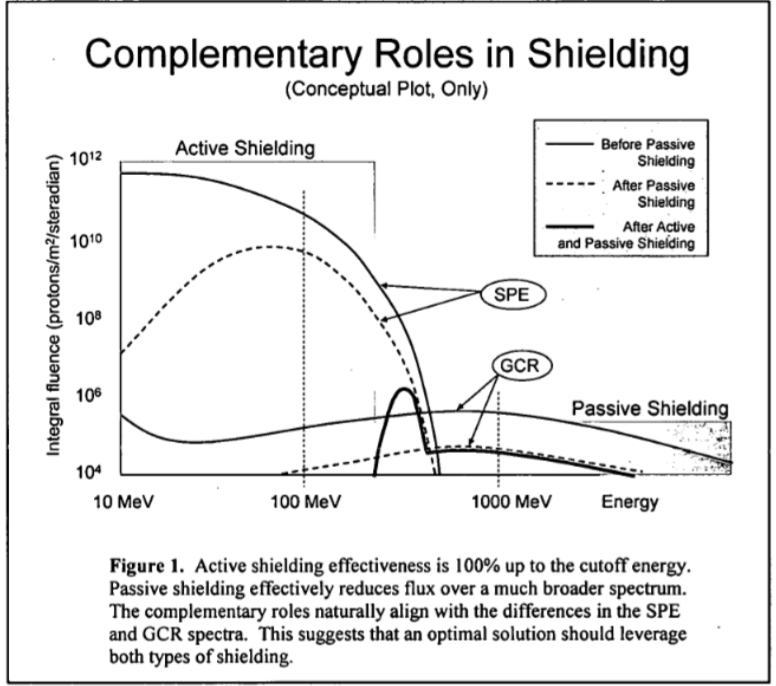Here's a concept I developed at NASA 18 years ago:
"Multipole Radiation Shielding."
Our director called it the First Generation Star Trek Shield. My lab lead had the idea to use electrostatics to protect spacecraft from cosmic radiation and he asked me to lead the effort. 1/n
"Multipole Radiation Shielding."
Our director called it the First Generation Star Trek Shield. My lab lead had the idea to use electrostatics to protect spacecraft from cosmic radiation and he asked me to lead the effort. 1/n
2/ The problem with using electrostatics to shield a spacecraft is that space is filled with both positive and negative charged particles, so if you use a positive field you attract the negative particles, and vice versa. Then,...
3/...your "shield" actually speeds up those particles so they hit you faster and cause MORE problems.
For example, galactic cosmic radiation is positive nuclei. They were accelerated in the shockwaves of supernovae throughout the galaxy and they randomly enter our solar system.
For example, galactic cosmic radiation is positive nuclei. They were accelerated in the shockwaves of supernovae throughout the galaxy and they randomly enter our solar system.
4/ Another picture of a shockwave of an exploding star (a supernova). Read more about it: https://room.eu.com/news/Astronomers_catch_a_supernova_shock_wave_in_visible_light_for_the_first_time
5/ The Crab Nebula. Shockwaves form where the wind of the pulsar (the stellar remnant after the star exploded) slams into the shell of gas that was blown off during the explosion. Source: NASA, ESA, J. Hester and A. Loll (Arizona State University)
6/ Shockwaves like these, scattered throughout the galaxy wherever stars have exploded, are believed to be the cause of super high energy galactic cosmic radiation. Ionized nuclei are accelerated by the electric fields in these shockwaves. Hundreds of millions of years later,...
7/...those nuclei might randomly pass through ANOTHER supernova shockwave. Then another. And another. Randomly bouncing around the galaxy like pinballs they attain a spectrum of energies including extremely high energies. Some of them go so fast, they are extremely hard to stop!
8/ But still, they are positively charged particles, so if you put a big enough positive electric field on your spacecraft, then in theory you can repel them. (Or at least you can repel the vast majority of them that aren't going at the most extremely high speeds.) BUT...
9/...the problem is that our solar system is also filled with the solar wind, and that includes electrons. Electrons are negatively charged, so if you put a giant positive field on your spacecraft to repel cosmic radiation, then you attract that vast sea of electrons.
10/ Let's say you use a 500 Megavolt charge on your spacecraft to make a positively-outward field. That will completely repel cosmic rays with kinetic energies up to 500 Mega Electron Volts (MeV) (and it will slightly deflect faster ones so the fraction that hit you is reduced).
11/ But now you will ATTRACT all the electrons in the vicinity so they will all hit you with a speed of 500 MeV! And there are vast orders of magnitude more electrons in the solar wind than the numbers of cosmic rays you were trying to deflect, so you made the problem worse.
12/ You might think, well, electrons are easily stopped by the hull of our spacecraft. The nuclei (cosmic rays) can go right through, but the electrons cannot. That's because a material like metal is mostly "empty space" where only the electrons have influence.
13/ That's true. Electrons are easily stopped by the hull of a spacecraft. But still, they each had 500 MeV of energy when they hit. When you abruptly stop a fast electron, its energy turns into x-rays. That flux of x-rays will cook the astronauts. This is now MUCH worse!

14/ So the key physics question in developing a Star Trek Shield is: how do you deflect the highly penetrating, high energy, positively charged ions, without attracting the vast sea of negative particles that surround you, which would make the problem even worse?
15/ My lab lead had asked me to work on this technology concept, and when I realized this problem with x-rays cooking the astronauts, I went into despair. This was my first physics project, and I was afraid it would be a failure. "It's impossible!"
16/ This was my first experience working on an "impossible" problem, and it turned out to be Not Impossible. This influenced me to believe (now) that there are no impossible problems. We just have to find new ways of looking at problems to make them *become* possible.
17/ The trick on this impossible problem was to leverage the asymmetries in the physics. What is asymmetric here? The starting energies of the particles. The solar wind (incl the negative electrons) starts with low energy. The cosmic rays start with high energy.
18/ So we can put a very weak electric field around the spacecraft that is negative and that will very gently sweep away the vast sea of electrons that have only low energy. This WILL attract the cosmic rays to come at us faster, but only a little bit because it is a weak field.
19/ Then, after sweeping away the electrons (right picture), we can have a much, much stronger positive field hidden in the middle of that weak negative field, and this positive field will stop many of the super high energy positive particles (left picture, zoomed in).
20/ So the trick is to have layers in the electric field, with it being weakly negative on the outside and strongly positive on the inside. Imagine a pit inside a peach. But how do we do that? (Image: Liz West/wikimedia)
21/ The new idea was to develop a "multipole" field with a negative monopole term and a positive quadrupole term. In multipole expansions, each term decays according to different exponents of the distance. Monopoles decay more slowly so reach farther. ( https://eprints.soton.ac.uk/361908/ )
23/ The simplest was to implement this was to "linearize" the "quadrupole" term by using two outriggers on the spacecraft. Those outriggers would be negatively charged while the body of the spacecraft would be positive, but everything together would be slightly negative.
24/ We wrote computer code to simulate the flow of particles around this spacecraft, and we showed that it successfully deflects both positive and negative particles.
25/ To write that code, we had to develop some new math to use in electric field multipole expansions including image charge effects. To this day this is one of the things I am most happy about doing, even though it has not been cited much. (full paper: https://benthamopen.com/ABSTRACT/TOAPJ-2-32)
26/ This shield cannot stop *all* the cosmic rays, because they have bounced through many supernova shockwaves around the galaxy, or came from other galaxies, and have many Giga electron volts (GeV) of energy. It isn't feasible (yet) to put billions of volts on a spacecraft. But,
27/...perfection is the enemy of good enough. We only need to reduce the dose. The shield has 3 benefits: 1) Repels all cosmic rays at energies less than the voltage of the inner spacecraft; 2) Slightly bends the paths of the faster rays, so more will slightly miss us; and,
28/ ...3) make the passive shielding on the spacecraft more efficient by slowing down the remaining radiation that hits us. The combination of all 3 benefits can produce a giant reduction in the dose the crew receives.
29/ After I stopped working on this project I moved on to how rockets blow soil, space mining, and regolith physics, which turned into a lifetime career. Others continued the radiation shield effort. But I wrote one paper on this before moving on: https://ieeexplore.ieee.org/abstract/document/1367649

 Read on Twitter
Read on Twitter